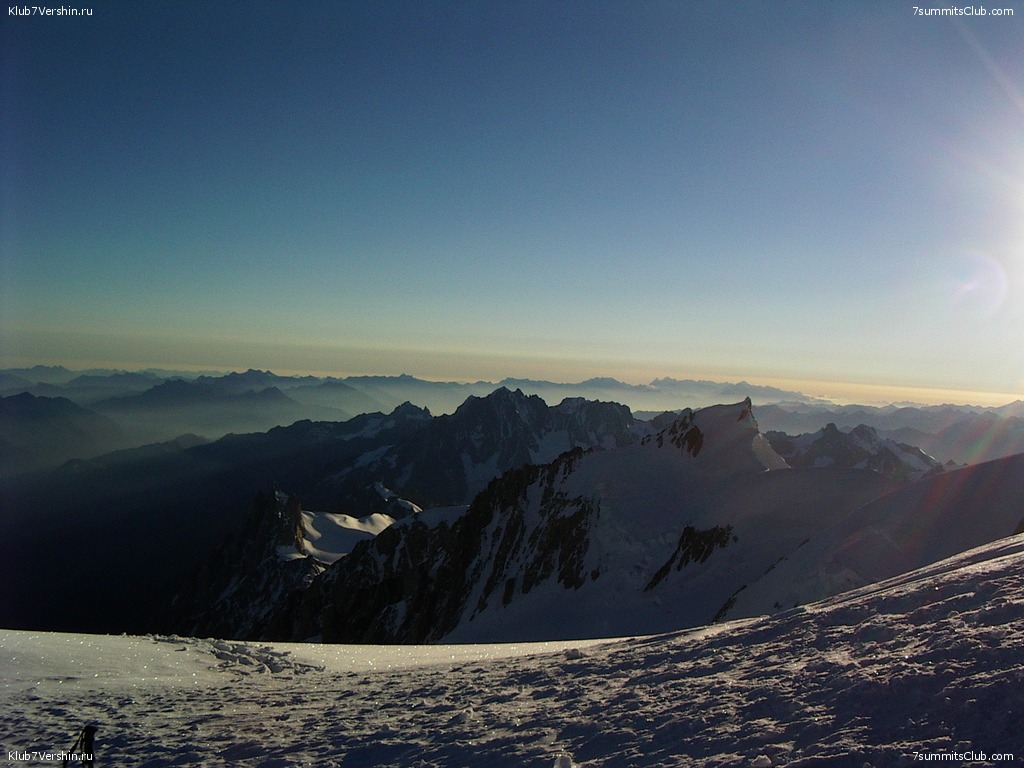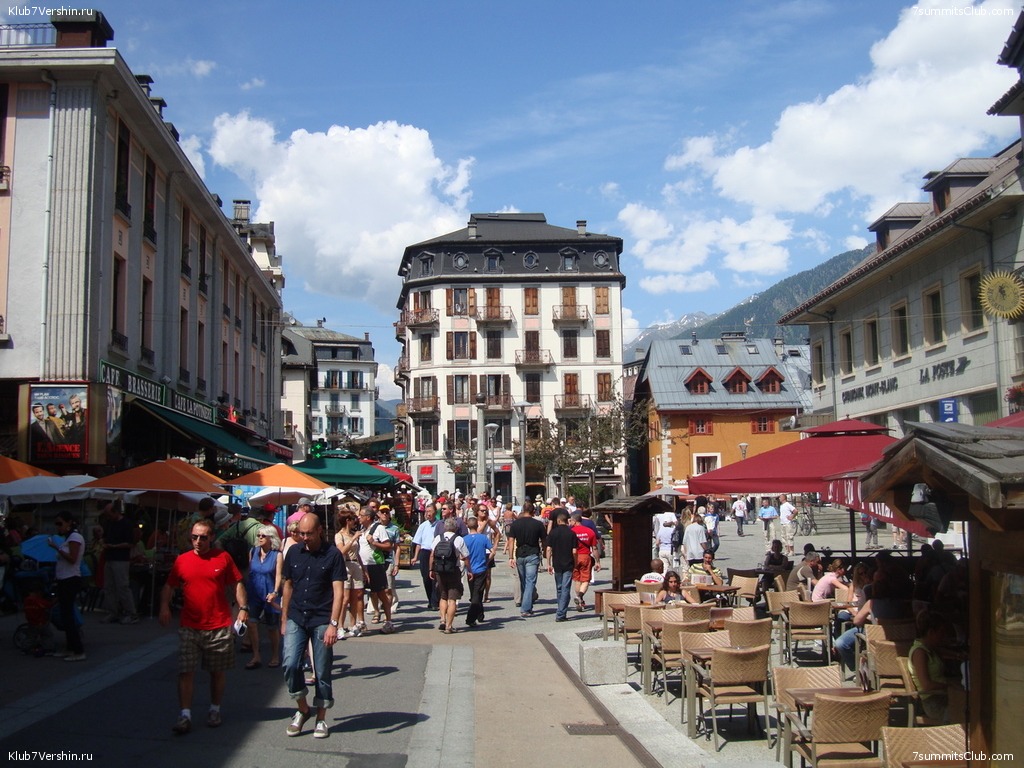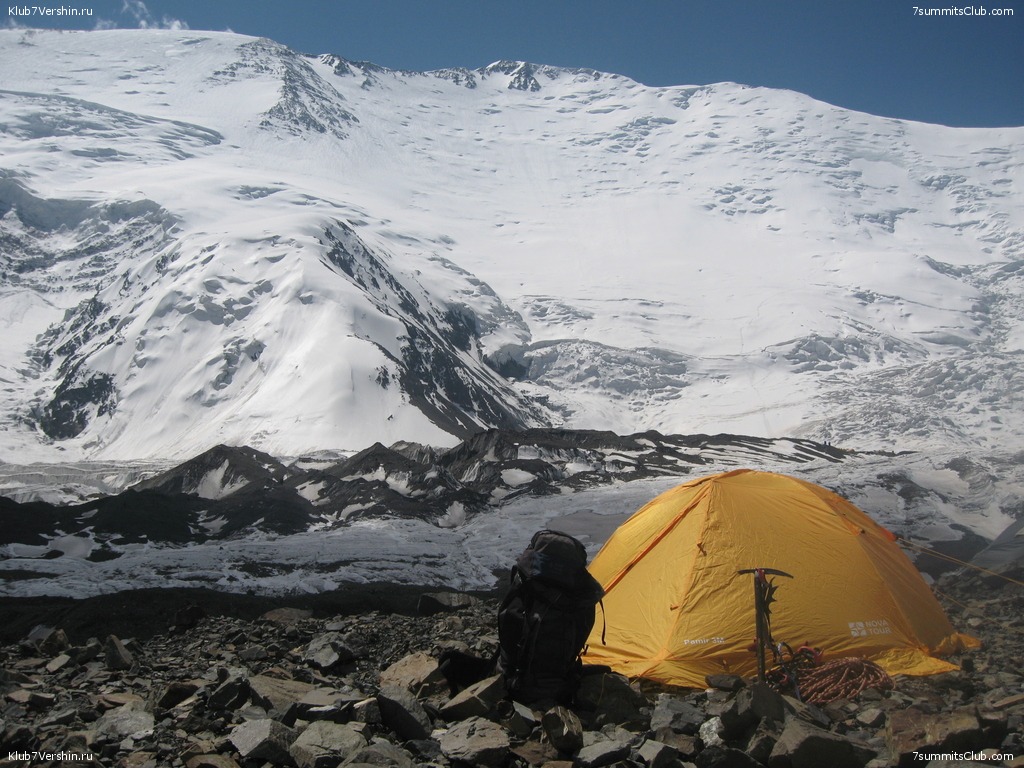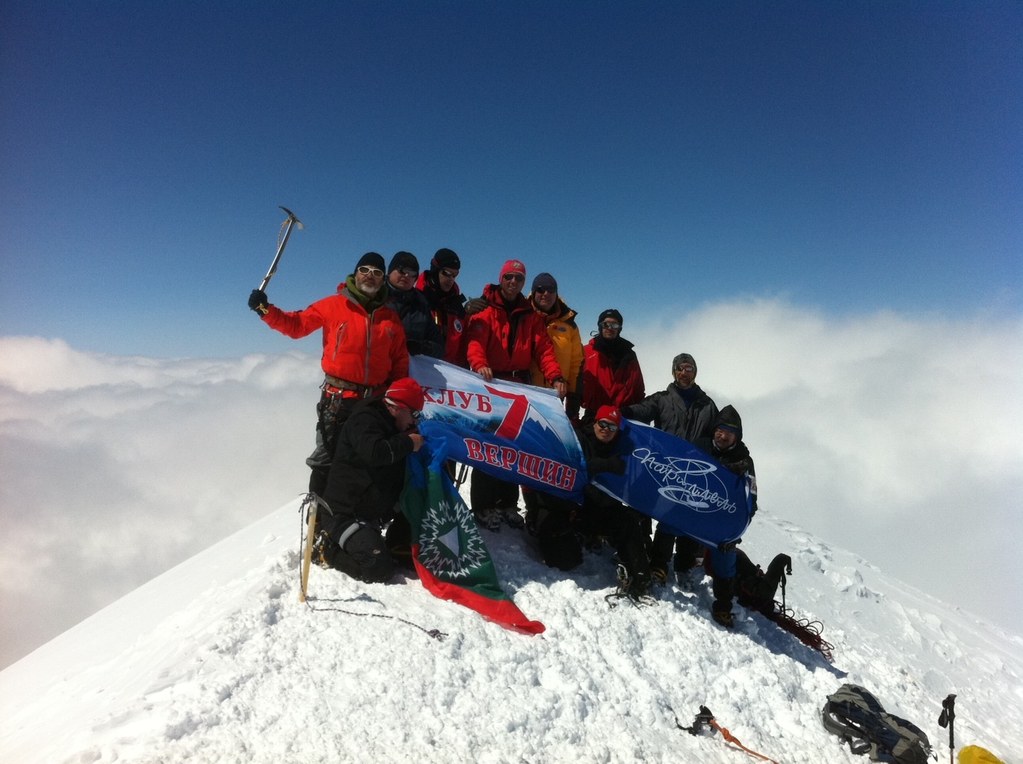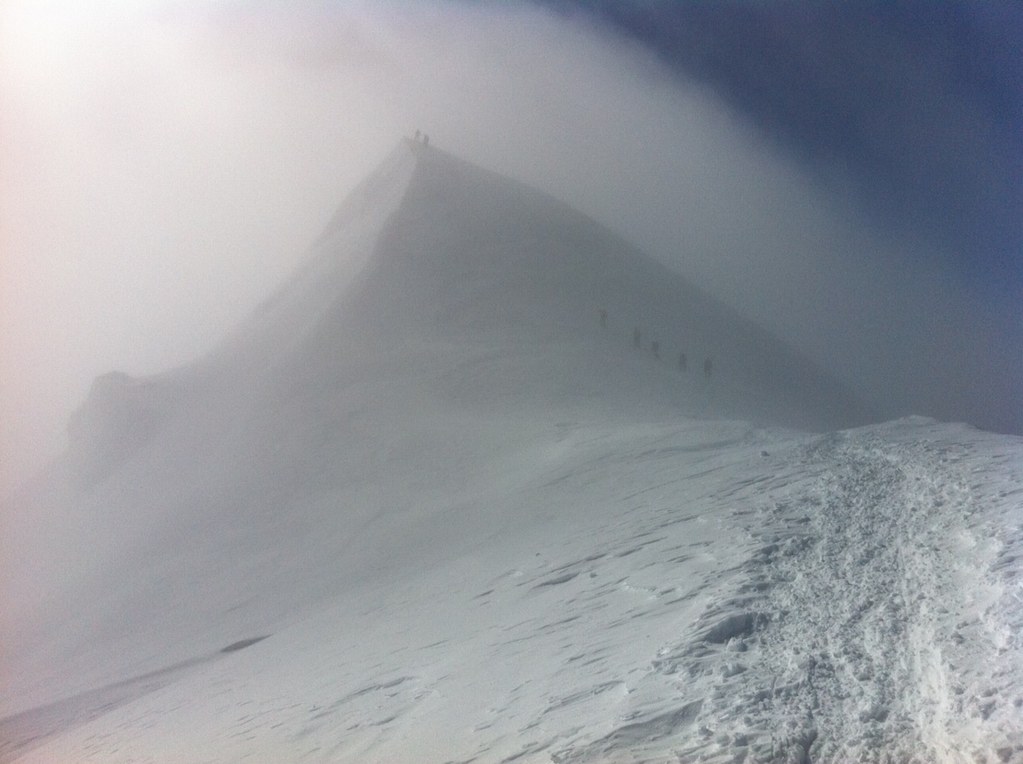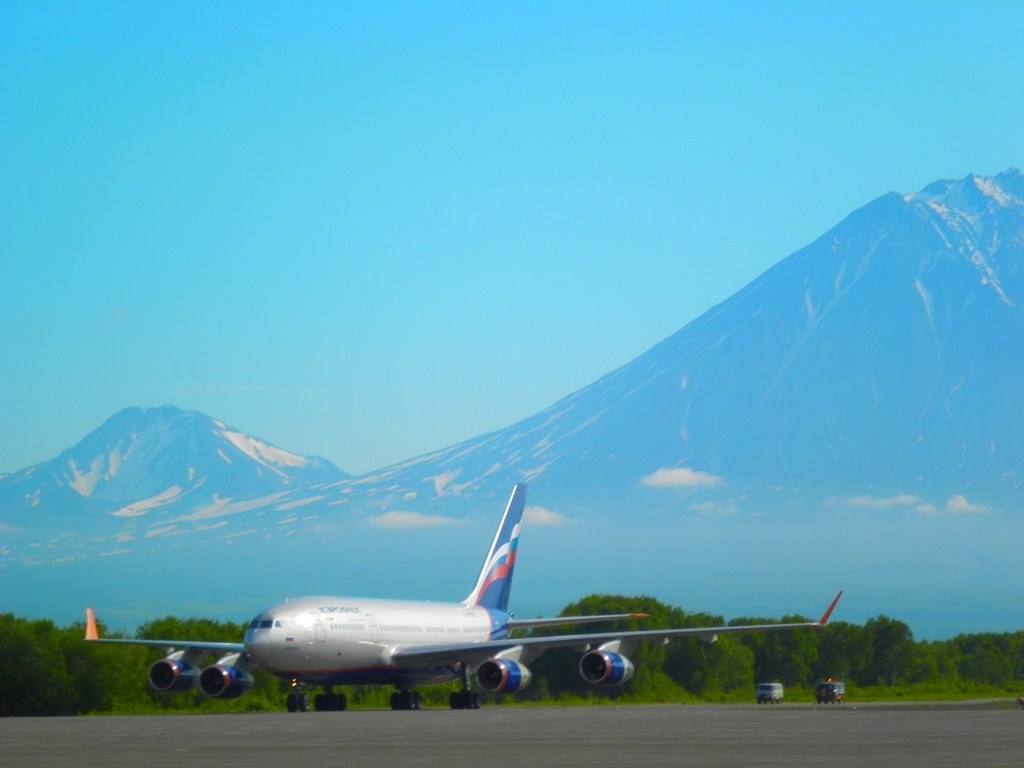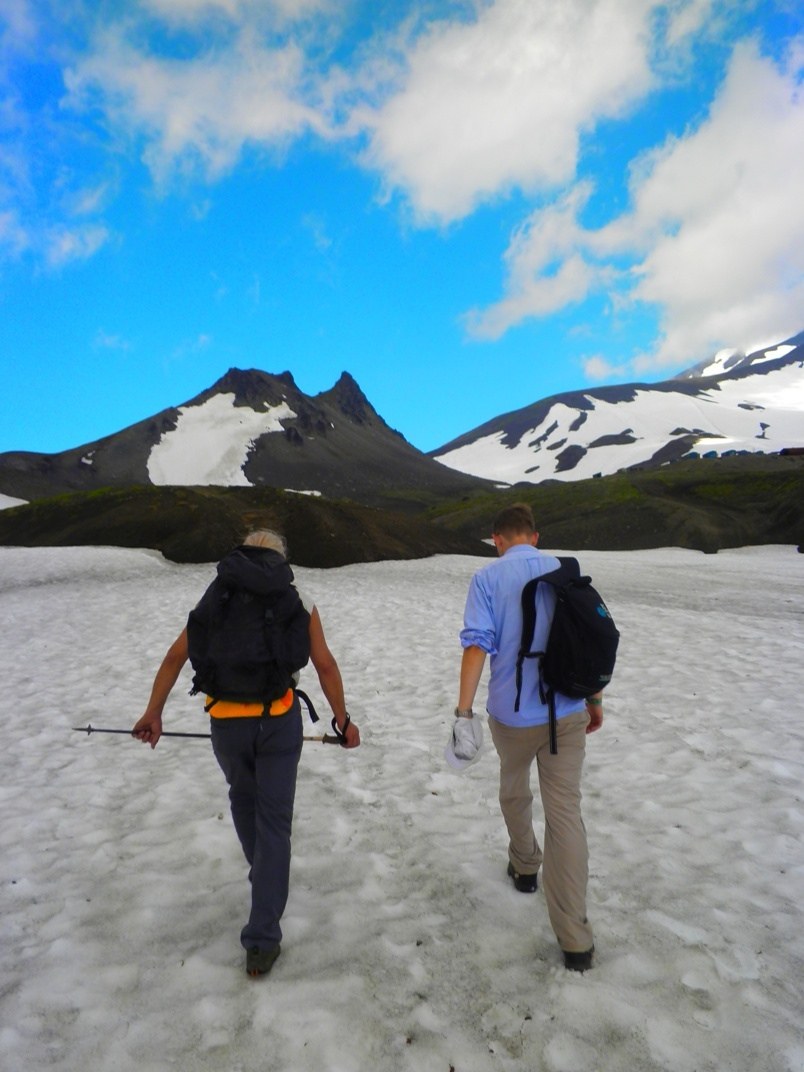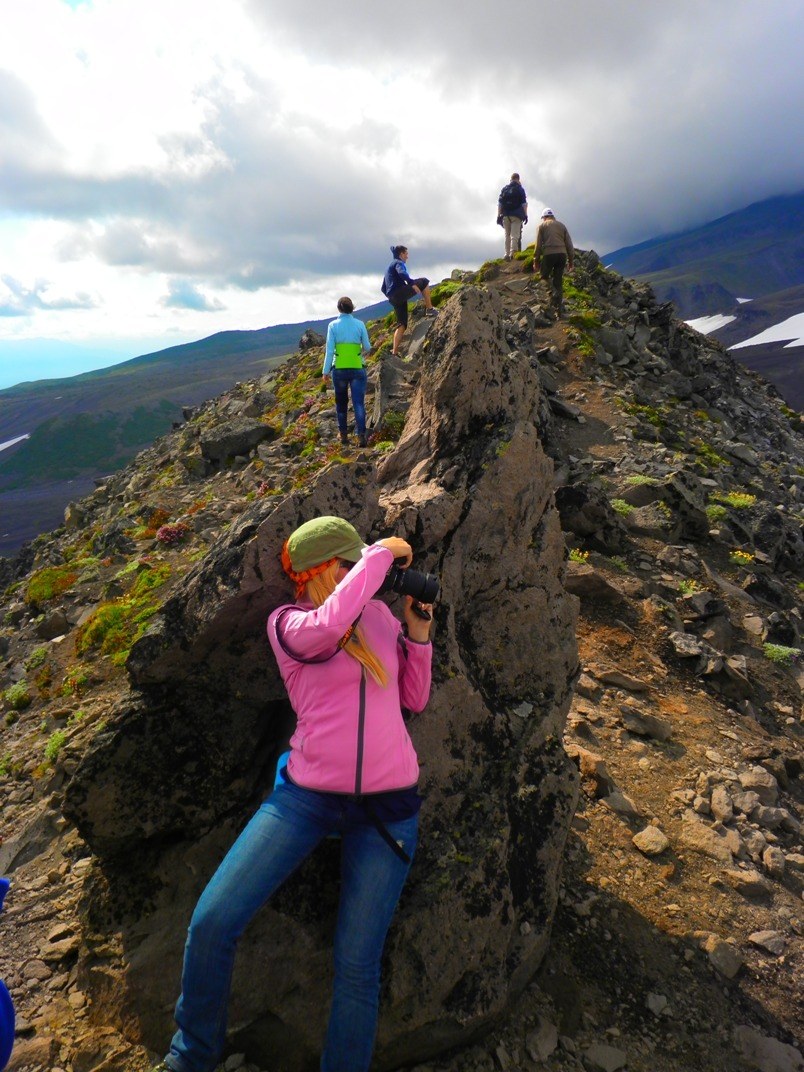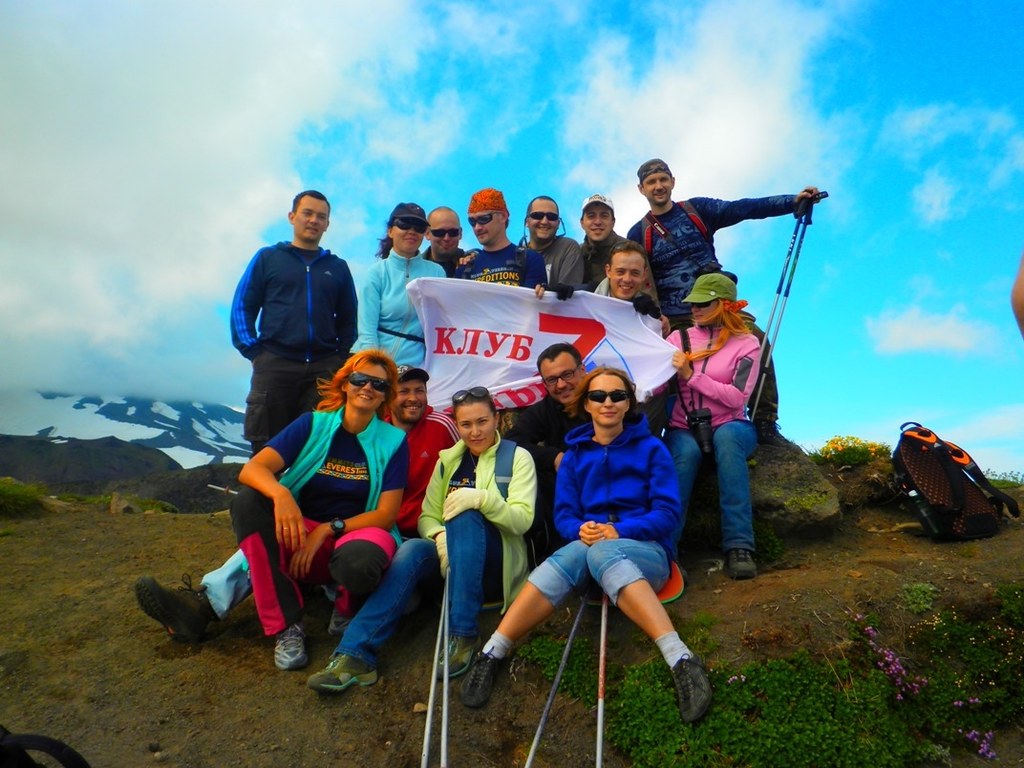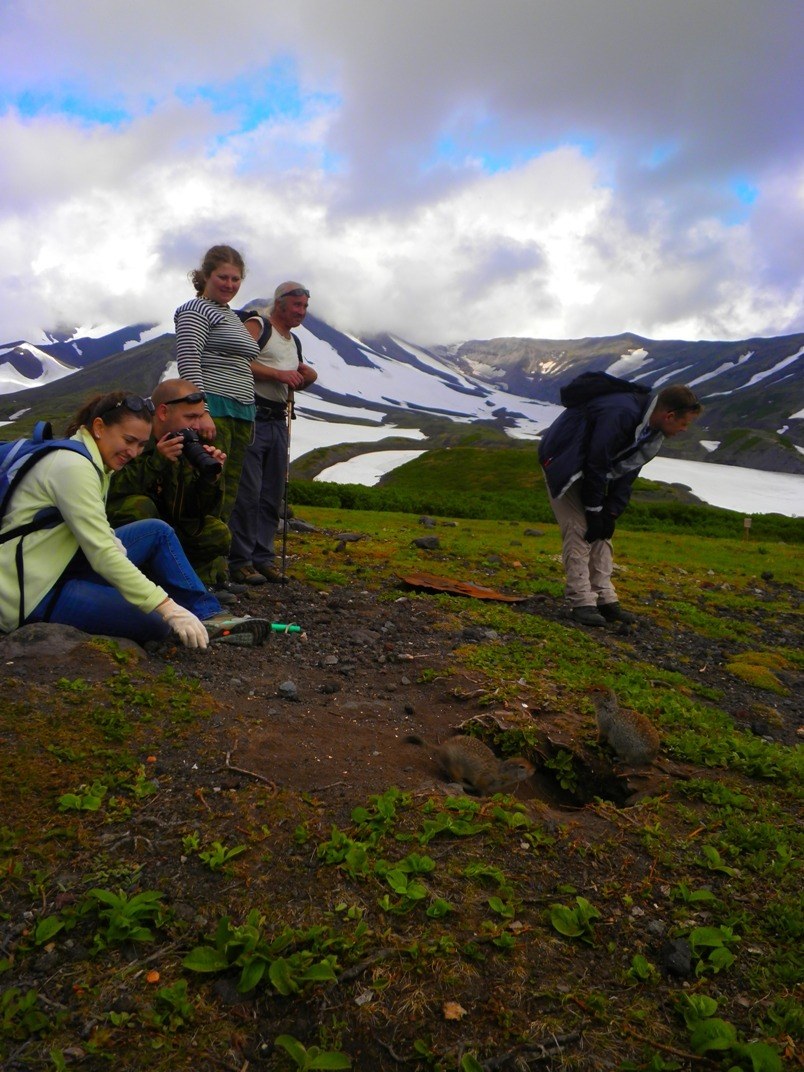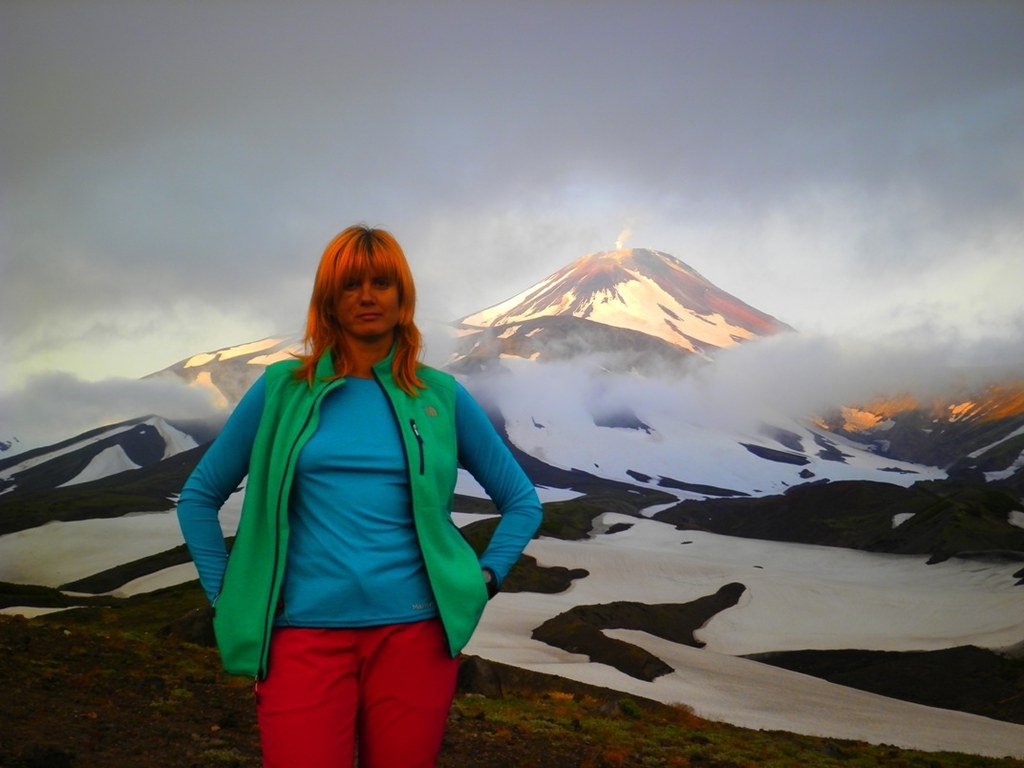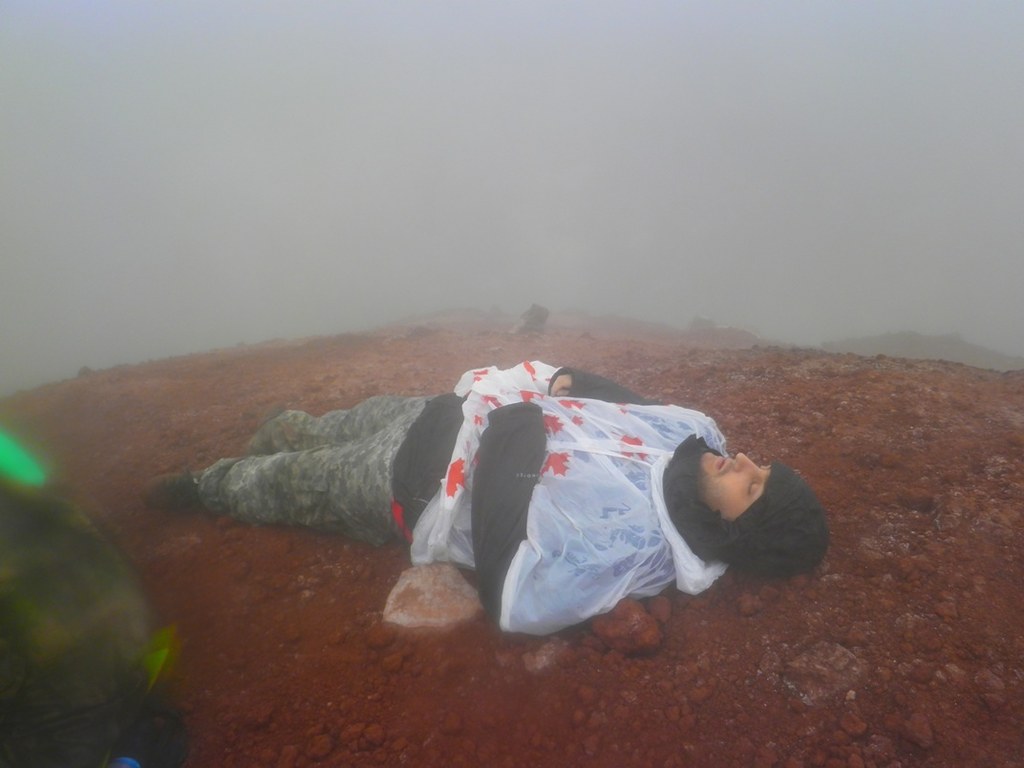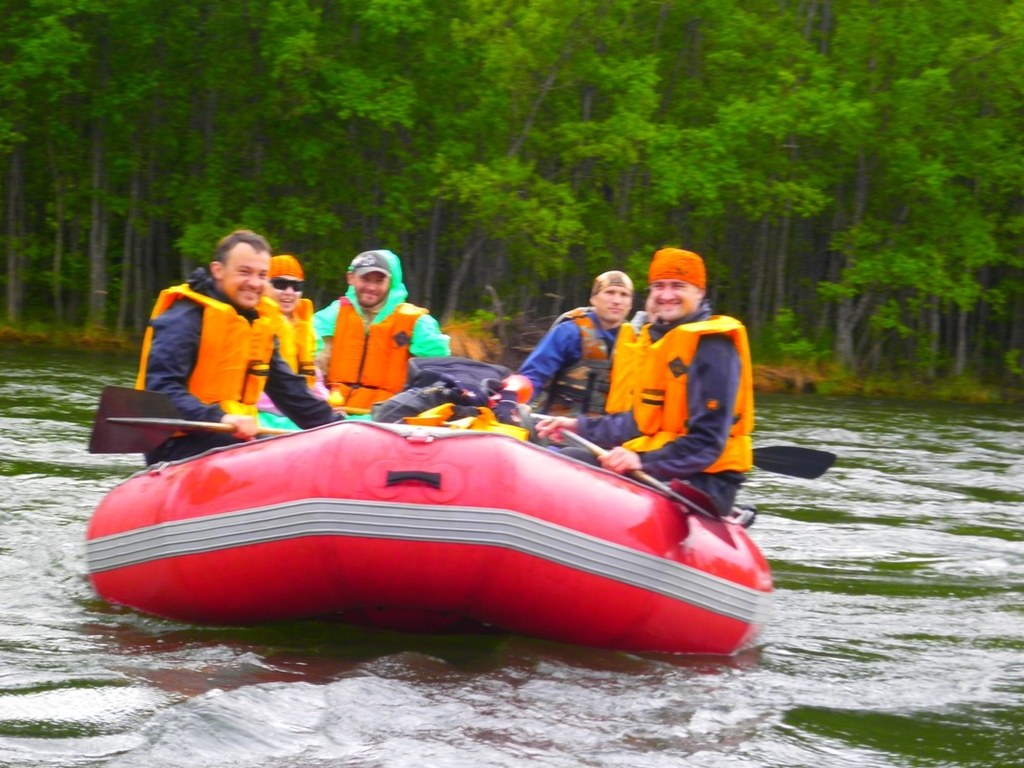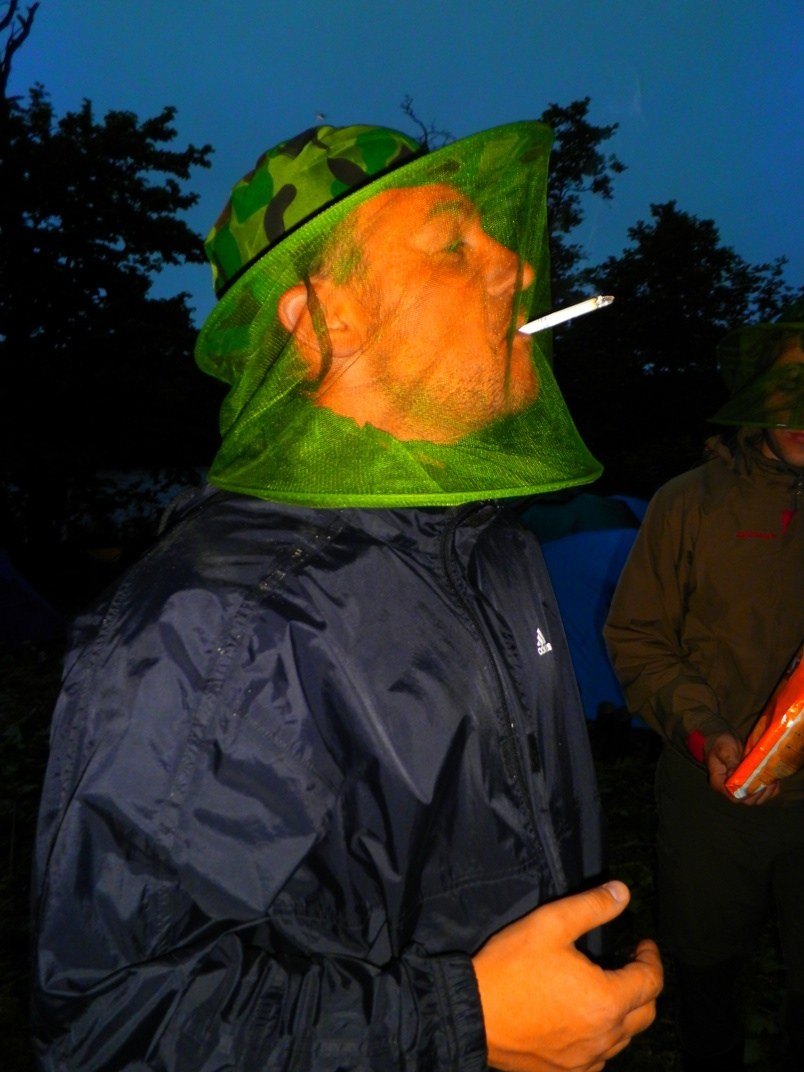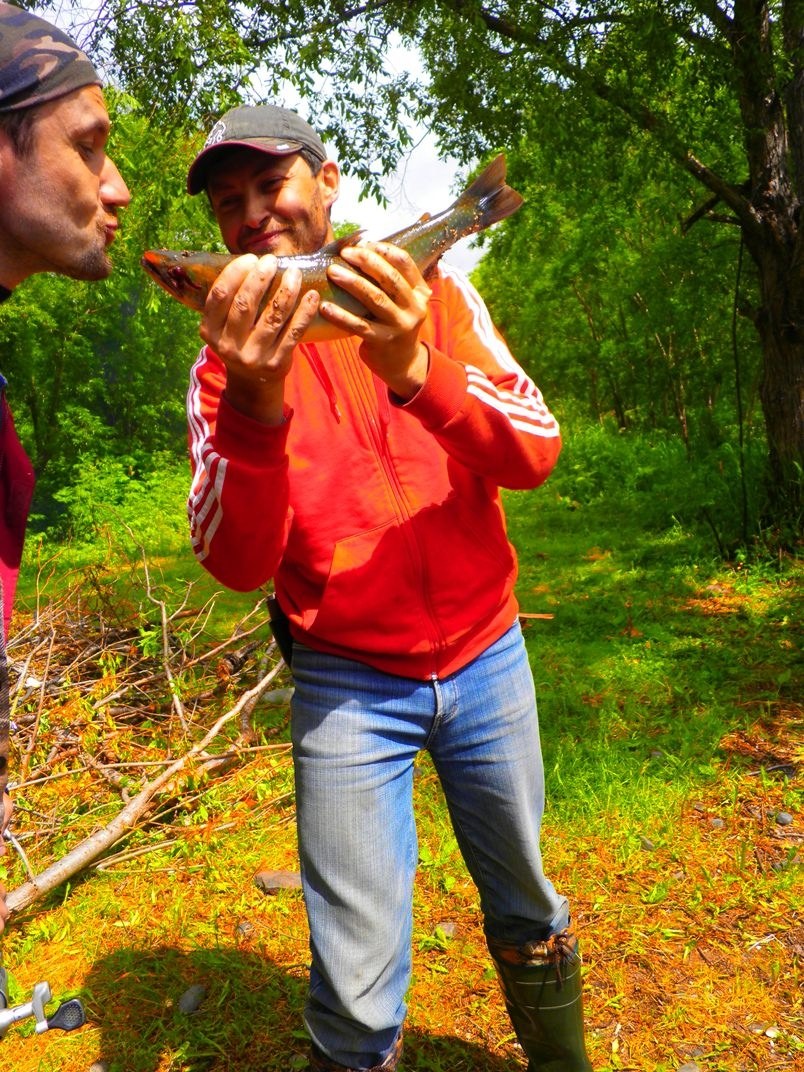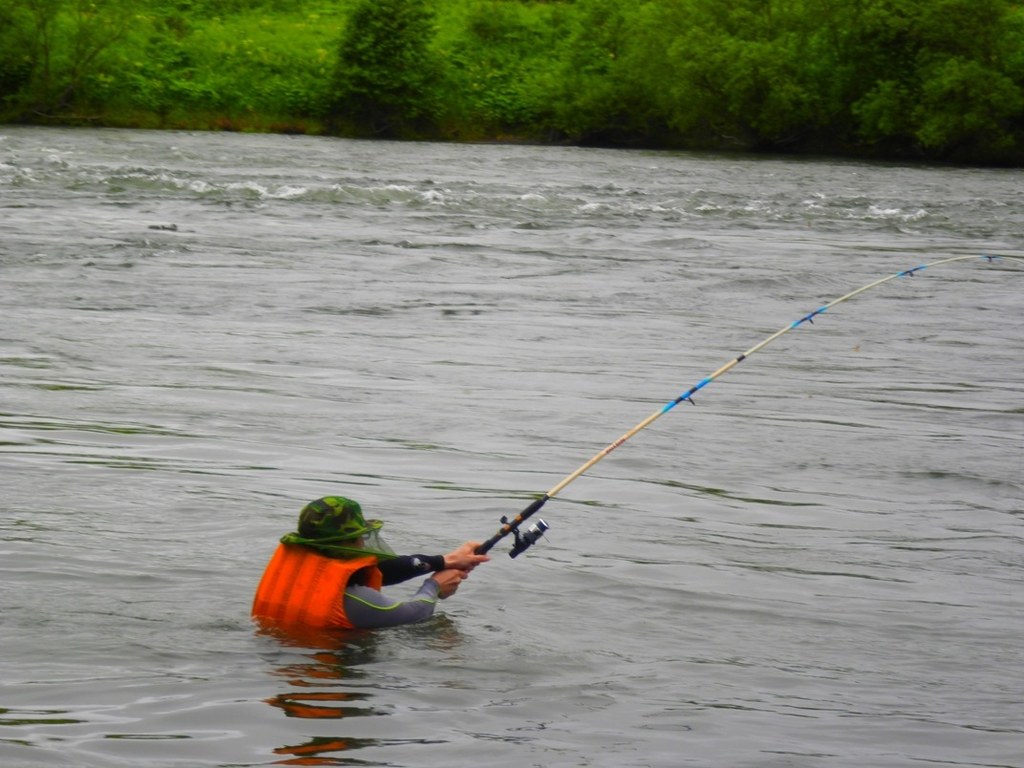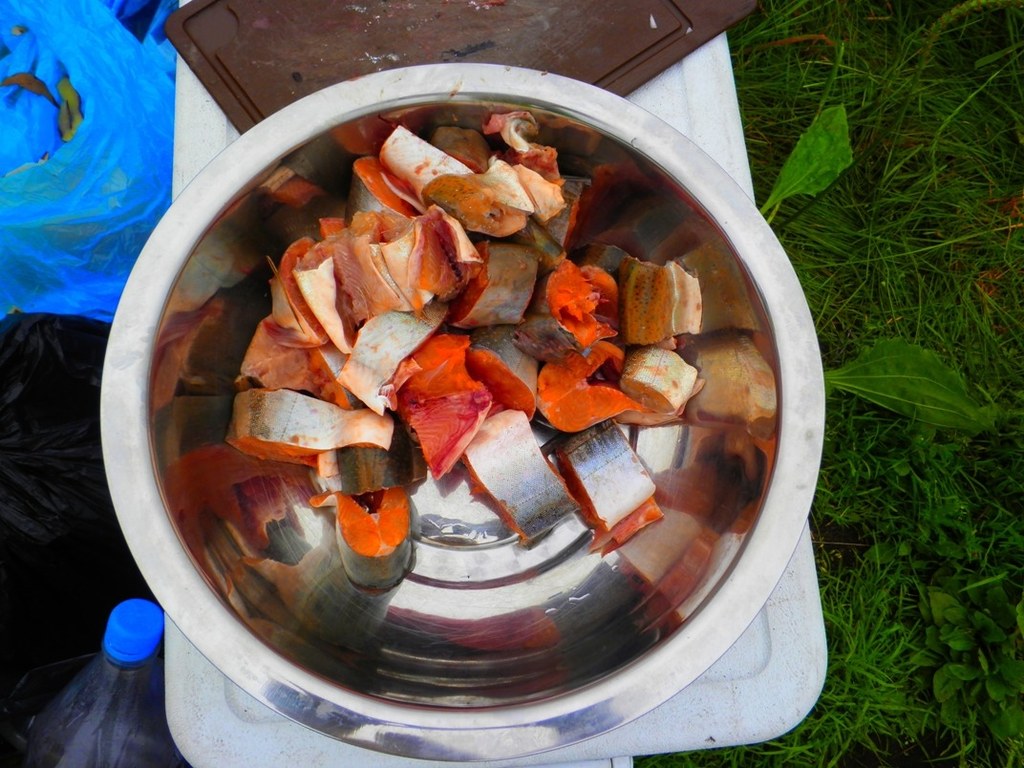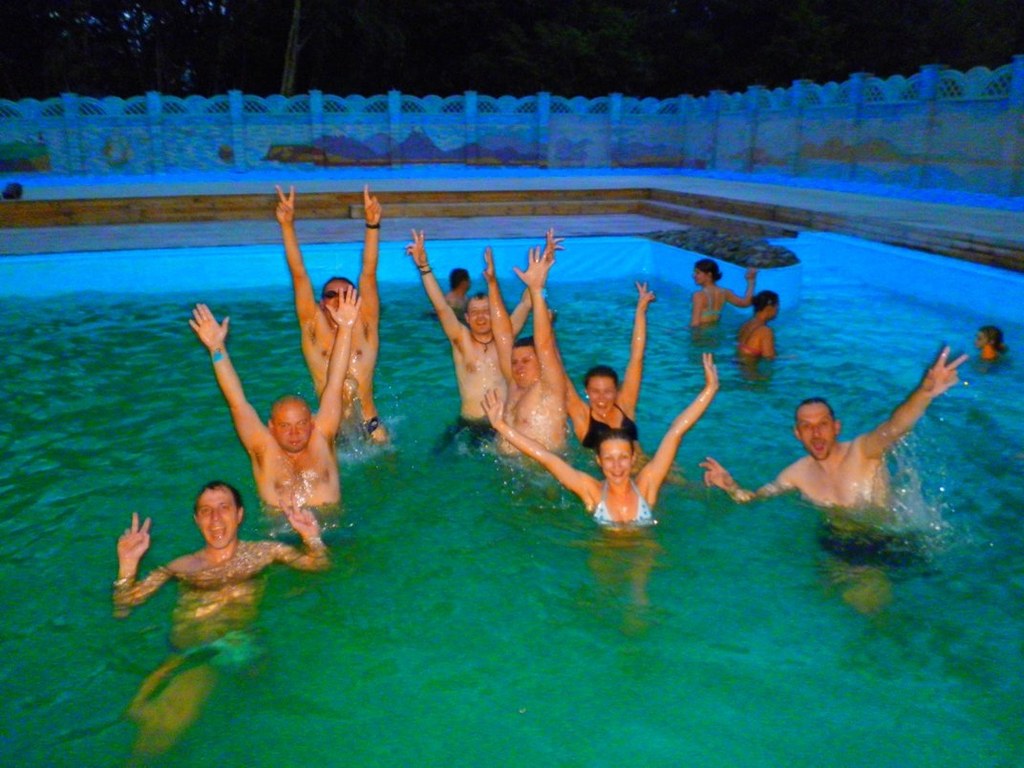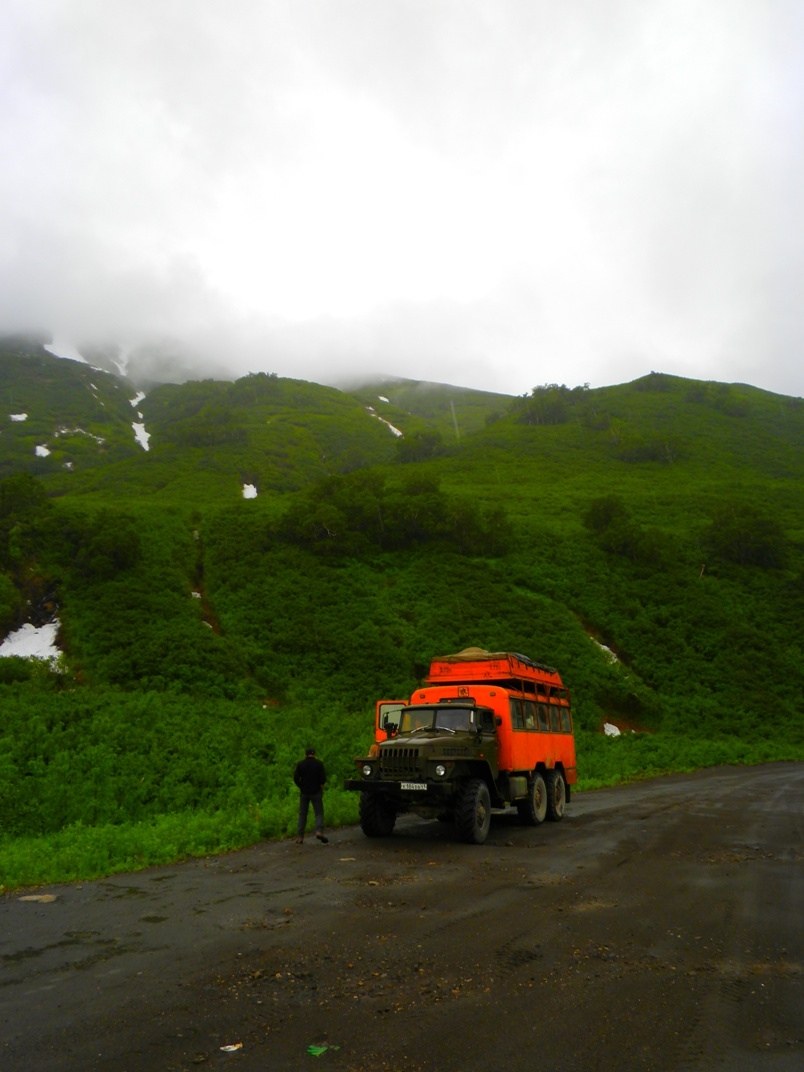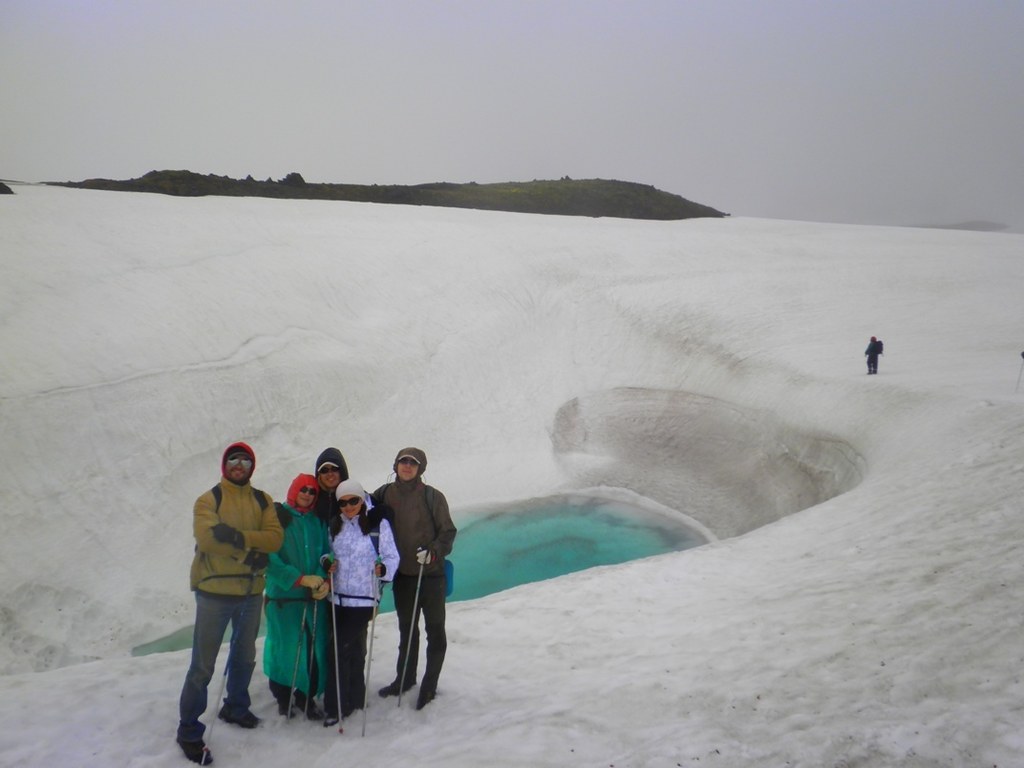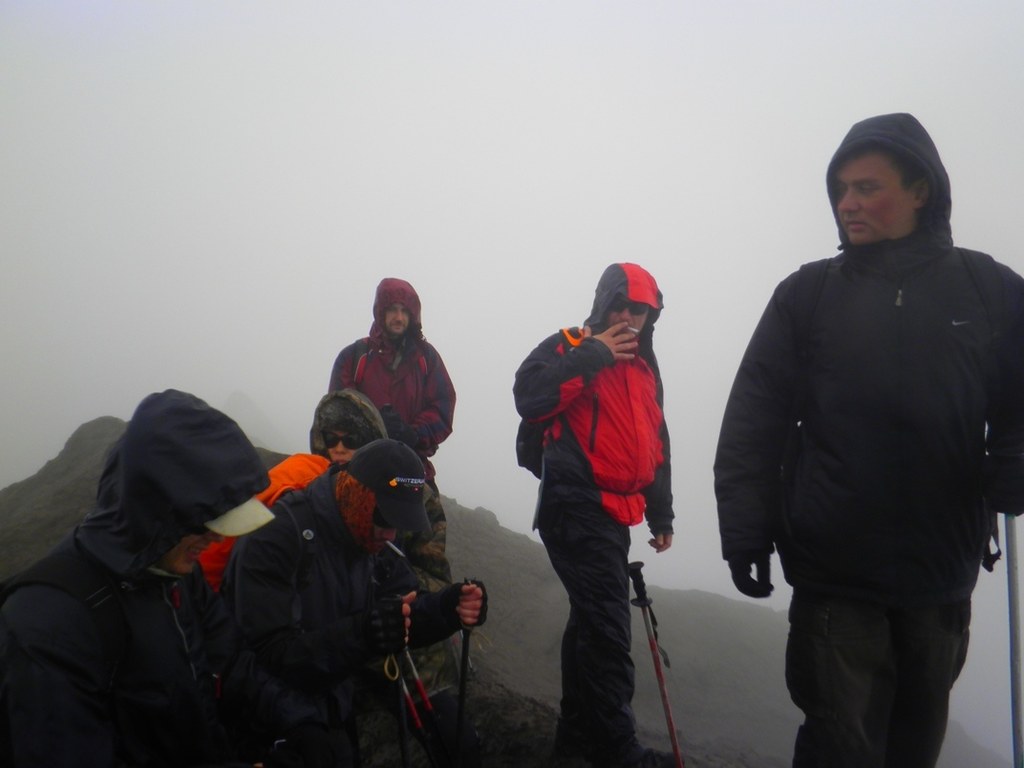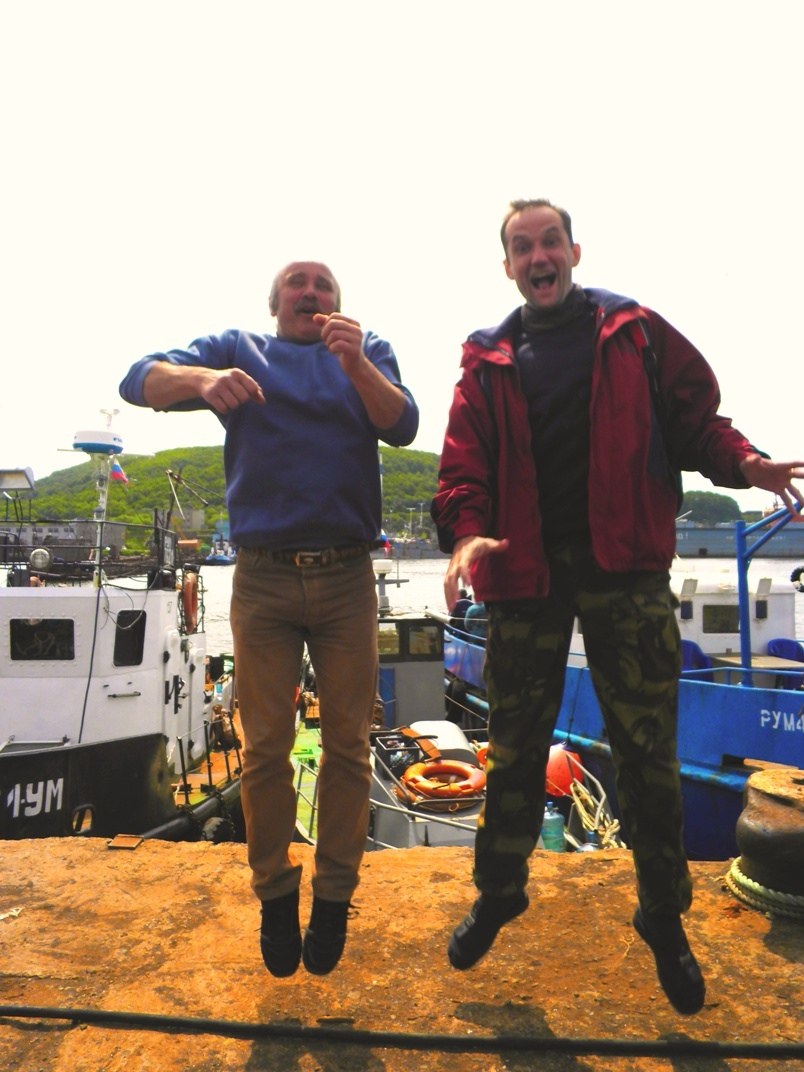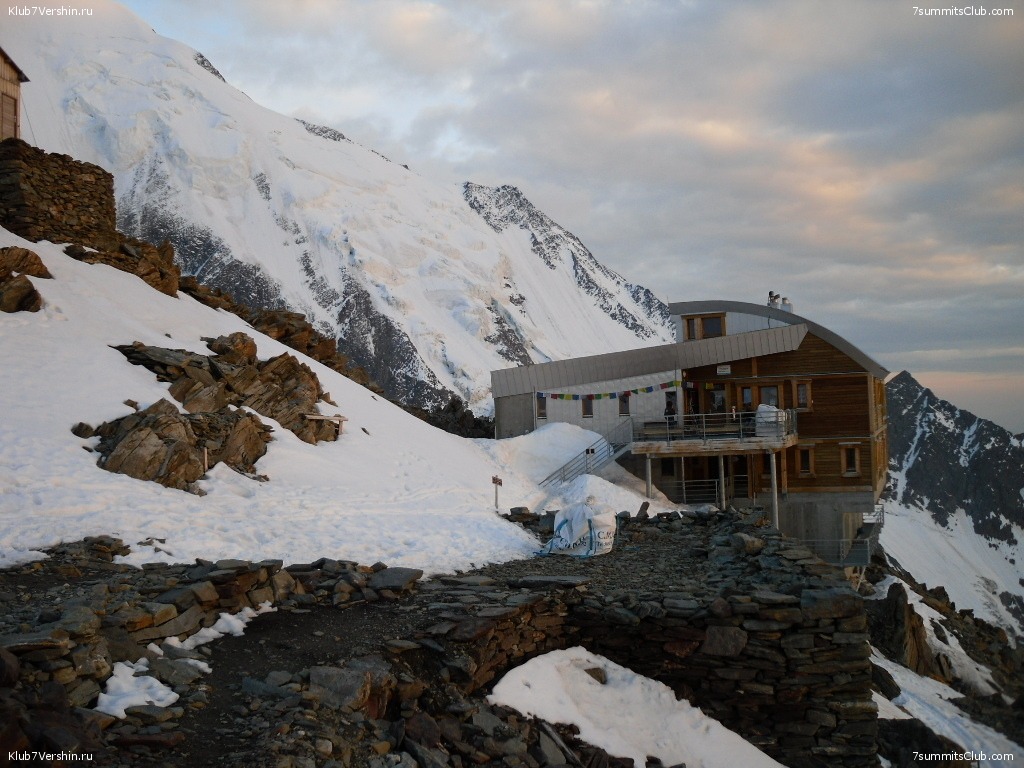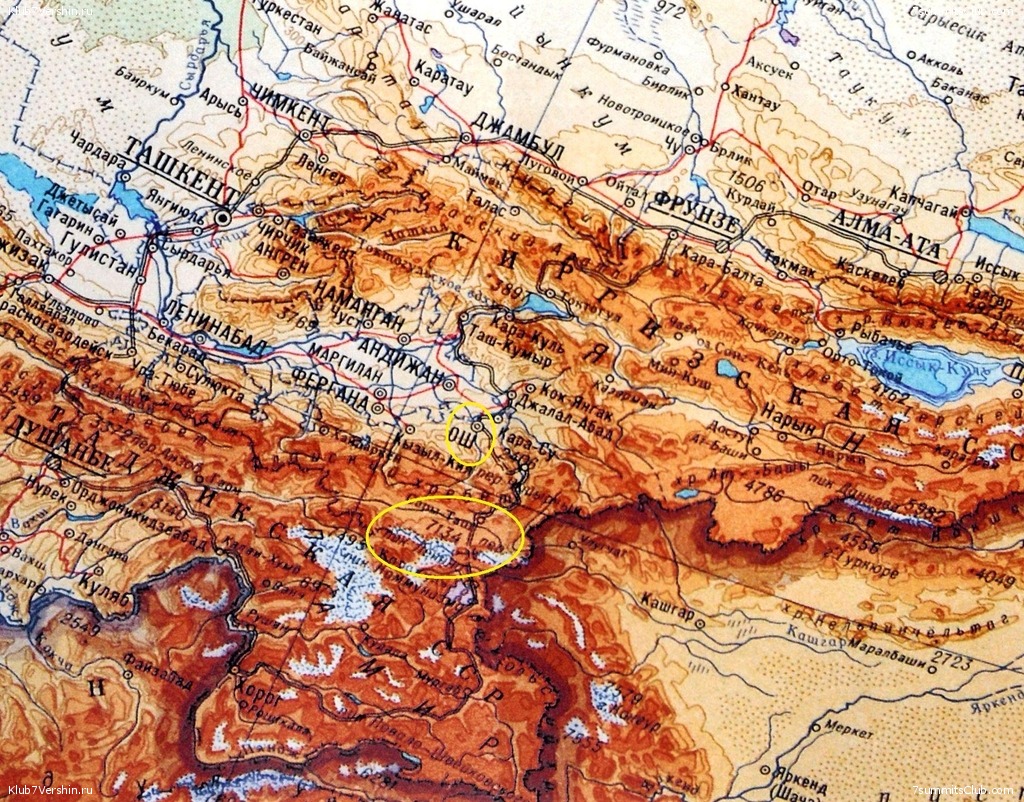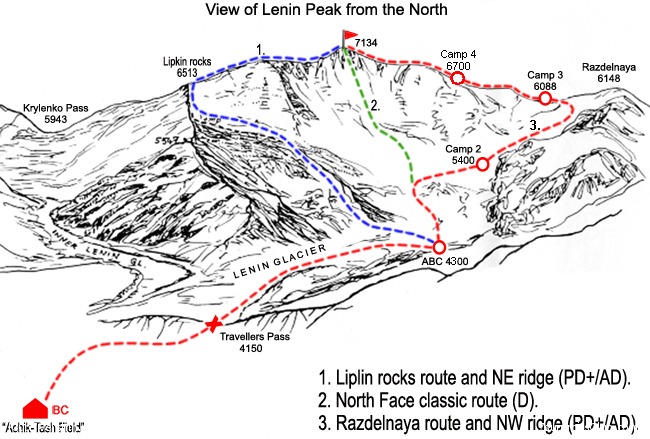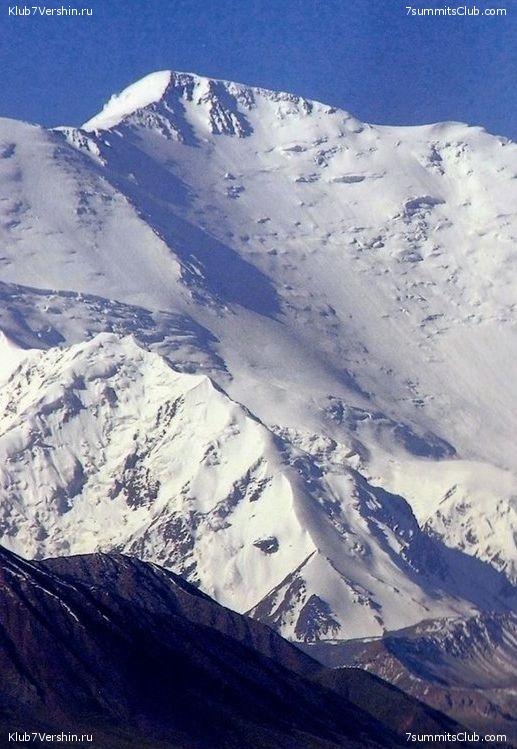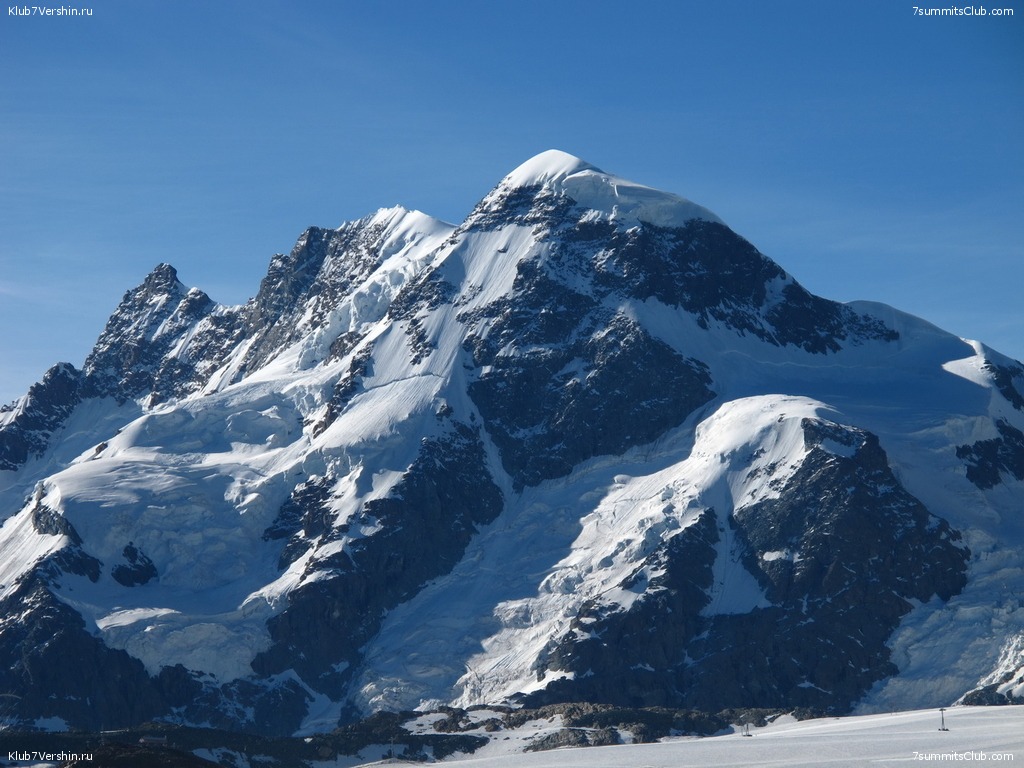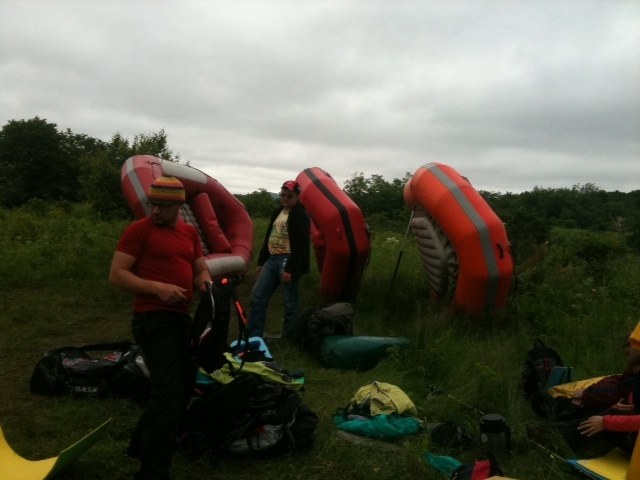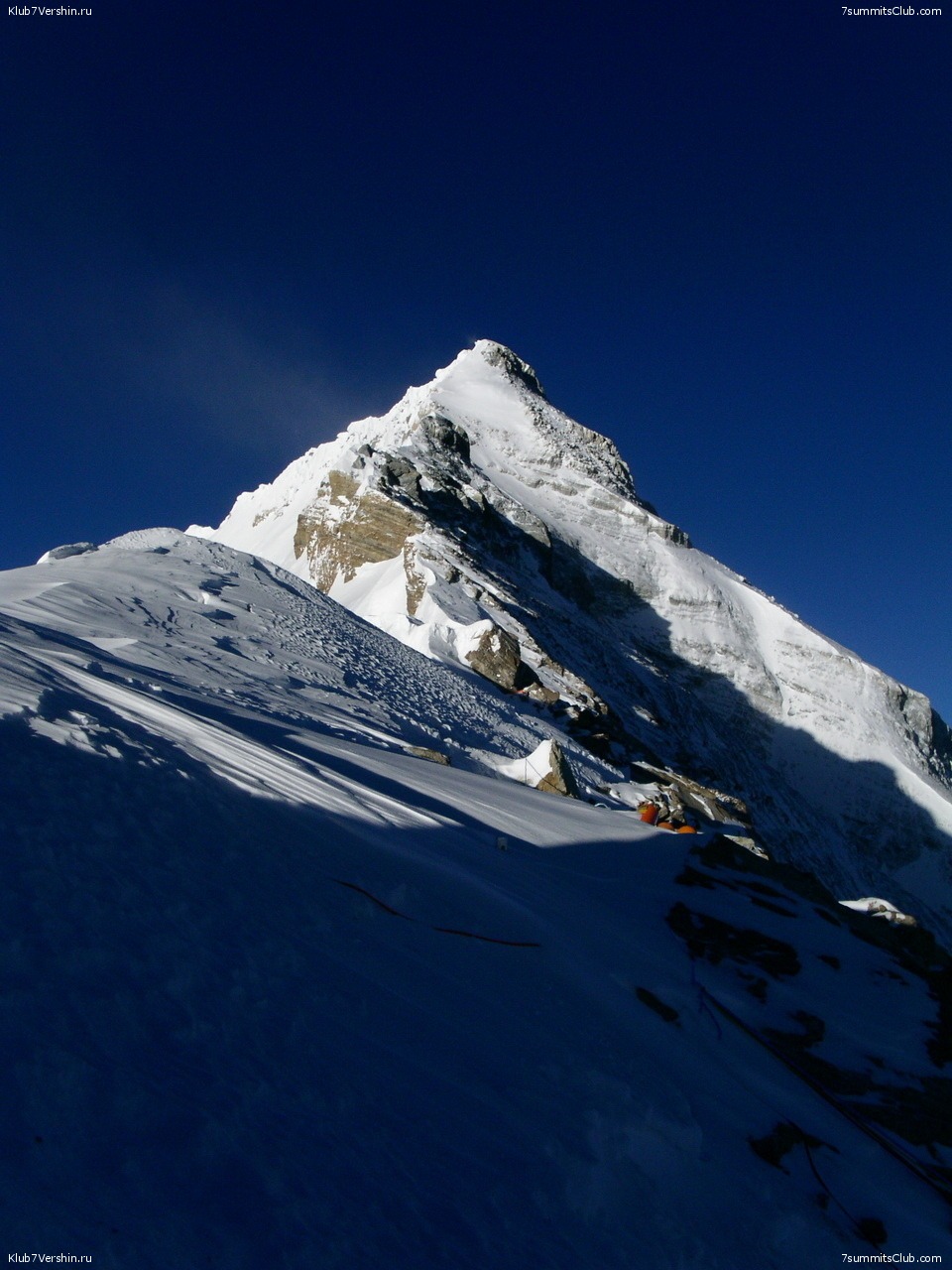All news - Page 269
Acclimatization climb to the Mountain Brevent (2500 m)
Today, our group, wich just arrived, climb mountain Brevent (2500 m), which is more well known between extreme skiers and snowboarders, as one of the famous place for extreme competition like Freeride World Tour. What a pity that it ...
Today, our group, wich just arrived, climb mountain Brevent (2500 m), which is more well known between extreme skiers and snowboarders, as one of the famous place for extreme competition like Freeride World Tour. What a pity that it is summer :) Although, judging by the weather forecast, the skis may be useful to our group.
The ascent took 4 hours, elevation 1500 km. After lunch we all continued their acquaintance with the city and began the preparation of the equipment for the tomorrow's snow studies, which will be held on Агю di Midi.
The ascent took 4 hours, high drop was 1500 km. After lunch we all continued their familiarity with the city and began the preparation of the equipment for the tomorrow's snow (ice) training, which will be on Aiguille du Midi.
Today in Chamonix arrive participants of the new expedition to the Mont Blanc
As Olga Rumyantseva reported, a new group of climbers on Mont Blanc arrived today in Chamonix, including: Andrew Dulsky Natalia Dulskaya Dulskaya Elvira Dyachenko, Maria Gretzky Roman Tsedebal Anastasia Tomorrow the group begins to ...
As Olga Rumyantseva reported, a new group of climbers on Mont Blanc arrived today in Chamonix, including:
Andrew Dulsky
Natalia Dulskaya
Dulskaya Elvira
Dyachenko, Maria
Gretzky Roman
Tsedebal Anastasia
Tomorrow the group begins to acclimatize and prepare for the ascent and two days later start going up attempting to climb the summit of Mont Blanc.
Expedition to Lenin Peak continues.
Lenin Peak.
New message from Dmitry Ermakov: "Hi all, this is Dmitry Ermakov from the slopes of the solar Lenin Peak. Our expedition continues. Today we had plan ice training. We learned to use it, climb on an ice wall, everything’s fine. One of ...
New message from Dmitry Ermakov:
"Hi all, this is Dmitry Ermakov from the slopes of the solar Lenin Peak. Our expedition continues. Today we had plan ice training. We learned to use it, climb on an ice wall, everything’s fine.
One of yours members felt a bit badly and descended to the base camp. Now he is under the supervision of doctors. He has all right, goes the amendment, and will be waiting for us.
Tomorrow we go to the camp 2 on 5300м, we are there to spend the night. The ascent will starts early at 4 am. The status of all of the group's normal. Buy everyone, till next connection".
----------------------------------------------------------------------------------------------------
List of groups:
1 Dmitry Ermakov - guide, expedition leader
2 Sergey Arefiev
3 Alexander Krovikov
4 George V. Kuzmin
5 Alexander Nesterenko
6 Constantine V. Ostapkevich
7 Gregory S. Sadykov
Summit!
We all say congratulations for our group under the leadership of Alexander Abramov. They now begin the descent from the top. After all the complexity of the weather they were able to ascent to the top today! our group Call from the ...
We all say congratulations for our group under the leadership of Alexander Abramov. They now begin the descent from the top. After all the complexity of the weather they were able to ascent to the top today!
our group
Call from the summit of Mon Blanc:
Hello, Alexander Abramov calls from the top of the Mont Blanc, there are eight members and three of our guide. We all ascend!
In the morning the weather was very bad. Actually we delay for 3 hours, instead of the 3 am we went out at 6, and it worked, because the weather became better. You should hear, here is people laugh and rejoice.
In the beginning, when we came out from the camp, was a real snowstorm, and every moment there was such impression, that we get down and turn around. In general, we are on top, wind practically are not present, the sun is shining, everyone is happy, call family and friends. Lists of members, who ascent will be a little later. We begin to descent, in fact descent he is rather complicated and dangerous, so it is too early yet to congratulate us. Contact when go down. Good-bye".
Alex, Noel, Lorenzo
--------------------------------------------------------------------------------------------------
Here is a list of members, who ascent to the Mont Blanc today:
1. Simonovic Vitaly
2. Dmitriev Andrey
3. Dmitriev Sergey
4. Romanov Vyacheslav
5. Alexey Soloviev
6. Chan-Sang Anatoly
7. Rogalev Peter
8. Vasily Kolesnikov
First guide Abramov Alexander
guides and assistants:Miller and Oleg Paul Milanov.
A small story in the photos about the expedition to Kamchatka 7 Summits Club and the company Alpari
So, on Thursday 21 July our expedition to Kamchatka with Club 7 Summits and the company Alpari has been completed. Unfortunately we have no luck with the weather. Almost all the time there were heavy rains. However, the songs of the Ra in ...
So, on Thursday 21 July our expedition to Kamchatka with Club 7 Summits and the company Alpari has been completed.
Unfortunately we have no luck with the weather. Almost all the time there were heavy rains.
However, the songs of the Ra in the guitar, Zhora-radio and dirty dances in the performance of Patrick helped us not hang down our head.
A small story in photographs about how it was:
Day of arrival of the group to Kamchatka 13 July turned out to be extremely successful in terms of the weather.
In the first day immediately from the plane the whole group went to Mount "Camel"
On the first hump of Camel mountain
On the second one
feed the local squirrels - evrazhek
Closer to midnight Avachinsky volcano opened, the one which we had to climb a few hours. But already in full fog and rain((
Ascending to the rop of Avacha was not easy
Rafting river "Fast"
All three days of rafting, we went by in mosquito net, even slept and smoking in them.
The first fish. Kiss for luck
Sometimes feed sooo big fish, which stealing for itself in the middle of the river
The body in the case. The body of the fish
Bathing in the hot springs in Paratunka resort
Our constant companion on the road of Kamchatka - russian big car
The ascent of Gorely volcano. An alternative to acid lake in the crater
At the top of the gorely volcano. Down there is the steep slope to the acid lake
After the sea tour on the Pacific bay I want to fly
Today our Team of the 7 Summits Club ascended to the Tet Rus hut.
There is bad weather in Mont Blanc. The snowfall last for a week. Today the group has quite difficult passage from Tet Rus hut (3167 m) on the rocky ridge at the hut Gute (3817m). Here is what says about this Alexander ...
There is bad weather in Mont Blanc. The snowfall last for a week. Today the group has quite difficult passage from Tet Rus hut (3167 m) on the rocky ridge at the hut Gute (3817m). Here is what says about this Alexander Abramov, the head of the expedition:
But, in the weather forecast, tomorrow, 22 of June the weather will ibe better.
The Group of 7 Summits Club at the Peak of Lenin in the Base Camp!
Lenin Peak.
Today Dmitry Ermakov, head of the expedition inform us from the Base camp at the Peak of Lenin and left the following message: "Hi to all, this is Ermakov. We are in the Base Camp. We all arrived, now have dinner. All according to ...
Today Dmitry Ermakov, head of the expedition inform us from the Base camp at the Peak of Lenin and left the following message:
"Hi to all, this is Ermakov. We are in the Base Camp. We all arrived, now have dinner. All according to plan, everyone is happy, and almost everything is wonderful. Have a nice day, untill next connection tommorow!"
List of groups:
1 Dmitry Ermakov - guide, expedition leader
2 Sergey Arefiev
3 Alexander Krovikov
4 George V. Kuzmin
5 Alexander Nesterenko
6 Constantine V. Ostapkevich
7 Gregory S. Sadykov
Alexander Abramov Team on the top of Breithorn.
We congratulate the participants of the successful ascent and wish them good weather on the way to the main goal of the expedition. Yesterday on our answering machine came a new message about the expedition to the Mont Blanc from Alex ...
We congratulate the participants of the successful ascent and wish them good weather on the way to the main goal of the expedition.
Yesterday on our answering machine came a new message about the expedition to the Mont Blanc from Alex Abramov:
"Hello, this is Alex Abramov from the expedition on the Mont Blanc. Before the climbing Mont Blanc we had a acclimatization in Zermatt. Today we went up the cable car to the station Klein Matterhorn (the highest in Europe station of the lift - 3883 m) and almost all the members went to the top of the Breithorn Mountain 4 164 m.
What we were pleased to report, in the composition of climbers was Lidia Vasilievna, 65 years old,
and she is for the first time in life came to the mountains. She is the mother of one of our participant Vitaly and today we all were very happy for her. It was hard, not very good weather, but nevertheless the whole team went to the top.
And now, we moved in Courmayeur, we will stay there and tomorrow we rise to Aiguille du Midi and transfer in Chamonix. Here we have such plans. The day after tomorrow we have assumed a day of rest and preparation to leave already for the ascent of Mont Blanc. Good-bye. Wait for new messages."
The Group of Lyudmila Korobeshko goes to the Mutnovsky Volcano
Last night we got a message from Luda: "Here is rain falls from the very morning, but even so we did not change our plans and go under the Mutnovsky volcano, where will locate camp. They say that there is now the snow, a lot of snow, but ...
Last night we got a message from Luda:
"Here is rain falls from the very morning, but even so we did not change our plans and go under the Mutnovsky volcano, where will locate camp. They say that there is now the snow, a lot of snow, but that's okay will dig a snow cave, apparently. We will try today, as all are full of energy to climb the volcano Gorely, tomorrow at Mutnovsky, and then, day after tomorrow, we will have a free day, if things work out, and we will return to Petropavlovsk and we have already ordered night clubs.
Buy everyone".
-----------------------------------------------------------------------------------------------------------
Membership of the expedition:
1. Chetvertakov George
2. Safiullina Kadriya
3. Adele Sachkov
4. Fazlutdinova Galina
5. Santos Queiriga Hugo Miguel
6. Olga Svyatkina
7. Efremov, Jaroslav
8. Tatiana Suvorova
9. Kosilov Ivan
10. Mukhametov Ratmir
11. Sidorov, Pavel
12. Skibitskiy Artur
13. Sergei Shurygin
14. Czerwinski Patryk
15. Guide Korobeshko Ludmila
Group of Lyudmila Korobeshko completed rafting the river called “Fast”
Today we received a new message about the adventures of our group of 7 Summits Club in Kamchatka. That's what Luda tell us: Hi everybody! Today, July 17, our team has completed rafting the river called “Fast”. This trip lasted ...
Today we received a new message about the adventures of our group of 7 Summits Club in Kamchatka. That's what Luda tell us:
Hi everybody!
Today, July 17, our team has completed rafting the river called “Fast”. This trip lasted for three days. We covered about a hundred kilometers and more than ten thresholds. Caught more than two dozen fish. Do not hurt no one bear. Today we moved to the base Paratunka for drying and rest. Tomorrow we leave to Mutnovsky base camp.
We have to climb two more Volcano: “Gorely” and “Mutnovsky”. There is a small difficulty- all the way to Mutnovsky covered with snow, and cars cannot reach the beginning of the route. That means about 28 extra km in the snow.
But we have nothing to fear!
Expedition:
1. Chetvertakov George
2. Safiullina Kadriya
3. Adele Sackov
4. Fazlutdinova Galina
5. Santos Queiriga Hugo Miguel
6. Olga Svyatkina
7. Efremov, Jaroslav
8. Tatiana Suvorova
9. Kosilov Ivan
10. Mukhametov Ratmir
11. Sidorov, Pavel
12. Skibitskiy Arthur
13. Sergei Shurygin
14. Czerwinski Patryk
15. guide Korobeshko Ludmila
The Group of Lyudmila Korobeshko in the top of the volcano Avachinsky 2741
Yesterday, on July 13, all the group climb to the top of the volcano Avachinsky 2741. As said Ludmila, the ascent was not easy, in case of a strong fog to rain and snow at the top. "At the top we look over fumaroles, breathe gases and ...
Yesterday, on July 13, all the group climb to the top of the volcano Avachinsky 2741. As said Ludmila, the ascent was not easy, in case of a strong fog to rain and snow at the top.
"At the top we look over fumaroles, breathe gases and inspired flew down to the hot sauna and beer. All together ascent and descent took about 11 hours. Today we have a rest, drying things and go to the recreation center of Paratunka. Tomorrow starts rafting down the Bystraya river."
-------------------------------------------------------------------------------------------------
1. Chetvertakov George
2. Safiullina Kadriya
3. Adele Sachkov
4. Fazlutdinova Galina
5. Santos Queiriga Hugo Miguel
6. Olga Svyatkina
7. Efremov, Jaroslav
8. Tatiana Suvorova
9. Kosilov Ivan
10. Mukhametov Ratmir
11. Sidorov, Pavel
12. Skibitskiy Artur
13. Sergei Shurygin
14. Czerwinski Patryk
15. Guide Korobeshko Ludmila
We start new expedition on Kamchatka
It is started new expedition of 7 Summits Club and the Company "Alpari" on Kamchatka.The group departs on Monday. In Petropavlovsk-Kamchatsky group meets with guide of 7 Summits Club- Ludmila Korobeshko.From the airport ...
It is started new expedition of 7 Summits Club and the Company "Alpari" on Kamchatka.
The group departs on Monday. In Petropavlovsk-Kamchatsky group meets with guide of 7 Summits Club- Ludmila Korobeshko.
From the airport the group immediately goes under the Avachinsky volcano.
-----------------------------------------------------------------------------------------------
Membership of the expedition:
1. Chetvertakov George
2. Safiullina Kadriya
3. Adele Sachkov
4. Fazlutdinova Galina
5. Santos Queiriga Hugo Miguel
6. Olga Svyatkina
7. Efremov, Jaroslav
8. Tatiana Suvorova
9. Kosilov Ivan
10. Mukhametov Ratmir
11. Sidorov, Pavel
12. Skibitskiy Artur
13. Sergei Shurygin
14. Czerwinski Patryk
15. Guide Korobeshko Ludmila
Summit !!!
Everest.
According to Alexander Abramov, the summit of Everest was climbed by seven members of the expedition 7 Summits Club, guides Victor Bobok and Noel Hanna, and seven Sherpas. We were the first in this decisive day, because we started first. ...
According to Alexander Abramov, the summit of Everest was climbed by seven members of the expedition 7 Summits Club, guides Victor Bobok and Noel Hanna, and seven Sherpas. We were the first in this decisive day, because we started first. Our team reached the summit about 3:30 local time.
Climbers:
Members of the expedition 7 Summits Club:
Karina Mezova (28 years) Nalchik
Andrew Podolyan (39) Moscow
Dmitry Sokov (43) Sakhalin
Igor Prinzyuk (33) Khabarovsk
Yuri Beloivan (44) Moscow
Roman Gretzky (39) Moscow
Christopher Cannizzaro (25) U.S.
Guides:
Noel Hanna (44) Ireland
Victor Bobok (50) Moscow
And our beloved friends Sherpas ( 7 persons)
Team 7 Summits Club starts in 40 minutes
Everest.
All day it was snowing, but we have no choice. About 170 people are now in the assault camp. We need to leave early to avoid stuck in traffic jams on the Second step. And tomorrow, according to the forecast, the weather will ...
All day it was snowing, but we have no choice. About 170 people are now in the assault camp. We need to leave early to avoid stuck in traffic jams on the Second step. And tomorrow, according to the forecast, the weather will deteriorate in the middle of the day. Forecasters promised an almost windless night with a weak clouds. So that the exit is scheduled at 7 p.m. local time (in Tibet - 8 p.m.). All 19 people are preparing for a summit push.
Evening news from Everest, good enough ....
Everest.
Today, in a day, Tibetan climbers have completed the preparation of route, now the rope fixed up along the whole route to the summit. The way is open. Weather still gives hope for a successful ascent. Wind is within allowable in power. On ...
Today, in a day, Tibetan climbers have completed the preparation of route, now the rope fixed up along the whole route to the summit. The way is open. Weather still gives hope for a successful ascent. Wind is within allowable in power. On the scheduled day, it should not worsen. The whole team (8 members, 8 Sherpas and 3 guides) are now in a camp at an altitude of 7800 meters. On May 20, in the morning, they will go to the assault camp at 8,300 m. And the same evening, that is, tomorrow, the whole team should go into the assault of Everest. All are doing well. A. Abramov.
